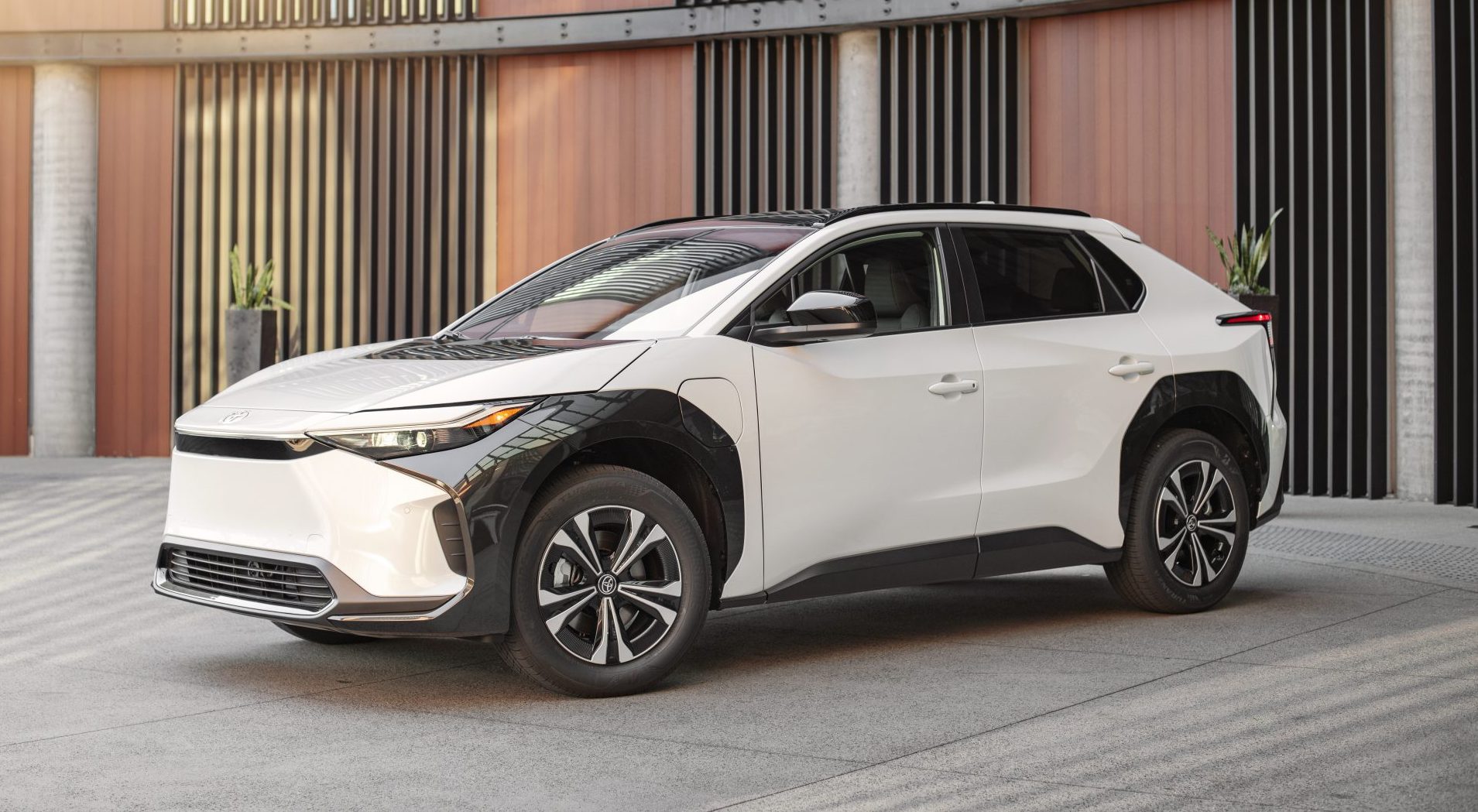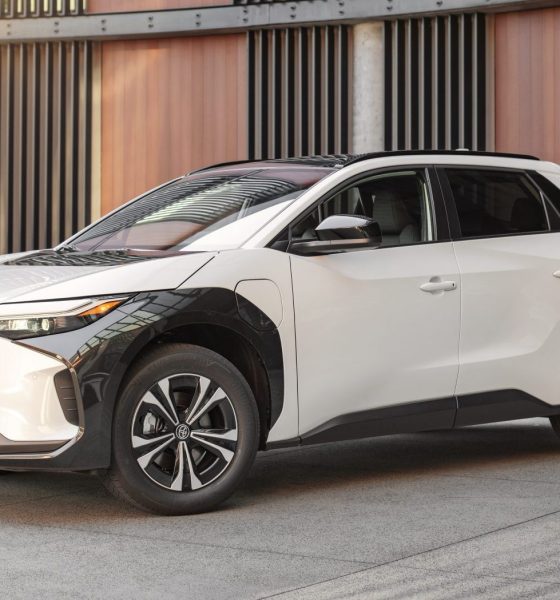Toyota and Hyundai’s electric vehicle ads have been banned by the Advertising Standards Authority (ASA), the UK’s advertising watchdog. The ban was due to Toyota and Hyundai allegedly exaggerating the charging speed of their electric vehicles and misleading consumers about the availability of rapid-charging points across the UK and Ireland.
In Toyota’s case, the Japanese carmaker ran a campaign on its website for its bZ4X all-electric crossover. The website claimed that the bZ4X could be charged to 80% in about 30 minutes using a 150 kW rapid charging system. Toyota also noted that drivers could “easily find rapid-charging points in a number of public locations,” particularly in areas where drivers were “most likely to need them.”
As for Hyundai, the company also ran a similar campaign to promote the Ioniq 5, a well-reviewed all-electric vehicle. The carmaker used its own website, a YouTube video featuring footballers from the Premier League club Chelsea, and a digital billboard in London’s Piccadilly Square to promote its car. The campaign claimed that the Ioniq 5 could be charged from 10% to 80% in 18 minutes using a 350 kW rapid charger.
As noted in a report from The Guardian, the ASA received complaints about the two automakers’ advertising campaigns. The complaints reportedly challenged Toyota and Hyundai’s claimed charging times, which both carmakers admitted were achieved in perfect factory conditions. The automakers’ claims about the availability of rapid charging locations in the UK were also challenged.
Toyota has noted that at the time of its ad campaign, Zap Map, a service that shows EV charging points, did not show the exact locations of 150 kW rapid chargers, though the service did state that there were 419 charging points at 134 locations across the UK. Only seven were listed in Scotland, two were listed in Wales, and none were listed in Northern Ireland.
Hyundai’s Charge My Hyundai website, on the other hand, listed 37 ultra-fast 350 kW charging locations in Great Britain. Only six were listed in Ireland, and “limited numbers” were listed in Wales and Scotland. No locations were listed for Northern Ireland.
Toyota and Hyundai reportedly explained that their advertisements were not misleading, especially since drivers would likely not need rapid charging points on shorter drives. The ASA, however, noted that the advertisements gave consumers the impression that it was “relatively straightforward” to access rapid charging points across the UK. The advertising watchdog also noted that numerous real-world factors affected EVs’ charging times, but these factors were controlled by the carmakers in the tests that the ads were based on.
“If any of those conditions were less than optimal, then charging times would likely take longer,” the ASA noted.
The two carmakers argued that it was pertinent for them to be allowed to promote EV charge times to consumers. Despite this, the ASA opted to ban the automakers’ ad campaigns anyway. “We concluded that because the ads omitted material information about the factors that could significantly affect the advertised charging time and the limitations in relation to availability…the claims had not been substantiated and were misleading,” the ASA said.
Don’t hesitate to contact us with news tips. Just send a message to simon@teslarati.com to give us a heads up.

News
Tesla FSD fleet is nearing 7 billion total miles, including 2.5 billion city miles
As can be seen on Tesla’s official FSD webpage, vehicles equipped with the system have now navigated over 6.99 billion miles.

Tesla’s Full Self-Driving (Supervised) fleet is closing in on almost 7 billion total miles driven, as per data posted by the company on its official FSD webpage.
These figures hint at the massive scale of data fueling Tesla’s rapid FSD improvements, which have been quite notable as of late.
FSD mileage milestones
As can be seen on Tesla’s official FSD webpage, vehicles equipped with the system have now navigated over 6.99 billion miles. Tesla owner and avid FSD tester Whole Mars Catalog also shared a screenshot indicating that from the nearly 7 billion miles traveled by the FSD fleet, more than 2.5 billion miles were driven inside cities.
City miles are particularly valuable for complex urban scenarios like unprotected turns, pedestrian interactions, and traffic lights. This is also the difference-maker for FSD, as only complex solutions, such as Waymo’s self-driving taxis, operate similarly on inner-city streets. And even then, incidents such as the San Francisco blackouts have proven challenging for sensor-rich vehicles like Waymos.
Tesla’s data edge
Tesla has a number of advantages in the autonomous vehicle sector, one of which is the size of its fleet and the number of vehicles training FSD on real-world roads. Tesla’s nearly 7 billion FSD miles then allow the company to roll out updates that make its vehicles behave like they are being driven by experienced drivers, even if they are operating on their own.
So notable are Tesla’s improvements to FSD that NVIDIA Director of Robotics Jim Fan, after experiencing FSD v14, noted that the system is the first AI that passes what he described as a “Physical Turing Test.”
“Despite knowing exactly how robot learning works, I still find it magical watching the steering wheel turn by itself. First it feels surreal, next it becomes routine. Then, like the smartphone, taking it away actively hurts. This is how humanity gets rewired and glued to god-like technologies,” Fan wrote in a post on X.
News
Tesla starts showing how FSD will change lives in Europe
Local officials tested the system on narrow country roads and were impressed by FSD’s smooth, human-like driving, with some calling the service a game-changer for everyday life in areas that are far from urban centers.

Tesla has launched Europe’s first public shuttle service using Full Self-Driving (Supervised) in the rural Eifelkreis Bitburg-Prüm region of Germany, demonstrating how the technology can restore independence and mobility for people who struggle with limited transport options.
Local officials tested the system on narrow country roads and were impressed by FSD’s smooth, human-like driving, with some calling the service a game-changer for everyday life in areas that are far from urban centers.
Officials see real impact on rural residents
Arzfeld Mayor Johannes Kuhl and District Administrator Andreas Kruppert personally tested the Tesla shuttle service. This allowed them to see just how well FSD navigated winding lanes and rural roads confidently. Kruppert said, “Autonomous driving sounds like science fiction to many, but we simply see here that it works totally well in rural regions too.” Kuhl, for his part, also noted that FSD “feels like a very experienced driver.”
The pilot complements the area’s “Citizen Bus” program, which provides on-demand rides for elderly residents who can no longer drive themselves. Tesla Europe shared a video of a demonstration of the service, highlighting how FSD gives people their freedom back, even in places where public transport is not as prevalent.
What the Ministry for Economic Affairs and Transport says
Rhineland-Palatinate’s Minister Daniela Schmitt supported the project, praising the collaboration that made this “first of its kind in Europe” possible. As per the ministry, the rural rollout for the service shows FSD’s potential beyond major cities, and it delivers tangible benefits like grocery runs, doctor visits, and social connections for isolated residents.
“Reliable and flexible mobility is especially vital in rural areas. With the launch of a shuttle service using self-driving vehicles (FSD supervised) by Tesla in the Eifelkreis Bitburg-Prüm, an innovative pilot project is now getting underway that complements local community bus services. It is the first project of its kind in Europe.
“The result is a real gain for rural mobility: greater accessibility, more flexibility and tangible benefits for everyday life. A strong signal for innovation, cooperation and future-oriented mobility beyond urban centers,” the ministry wrote in a LinkedIn post.
News
Tesla China quietly posts Robotaxi-related job listing
Tesla China is currently seeking a Low Voltage Electrical Engineer to work on circuit board design for the company’s autonomous vehicles.

Tesla has posted a new job listing in Shanghai explicitly tied to its Robotaxi program, fueling speculation that the company is preparing to launch its dedicated autonomous ride-hailing service in China.
As noted in the listing, Tesla China is currently seeking a Low Voltage Electrical Engineer to work on circuit board design for the company’s autonomous vehicles.
Robotaxi-specific role
The listing, which was shared on social media platform X by industry watcher @tslaming, suggested that Tesla China is looking to fill the role urgently. The job listing itself specifically mentions that the person hired for the role will be working on the Low Voltage Hardware team, which would design the circuit boards that would serve as the nervous system of the Robotaxi.
Key tasks for the role, as indicated in the job listing, include collaboration with PCB layout, firmware, mechanical, program management, and validation teams, among other responsibilities. The role is based in Shanghai.
China Robotaxi launch
China represents a massive potential market for robotaxis, with its dense urban centers and supportive policies in select cities. Tesla has limited permission to roll out FSD in the country, though despite this, its vehicles have been hailed as among the best in the market when it comes to autonomous features. So far, at least, it appears that China supports Tesla’s FSD and Robotaxi rollout.
This was hinted at in November, when Tesla brought the Cybercab to the 8th China International Import Expo (CIIE) in Shanghai, marking the first time that the autonomous two-seater was brought to the Asia-Pacific region. The vehicle, despite not having a release date in China, received a significant amount of interest among the event’s attendees.










